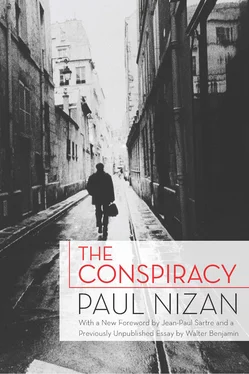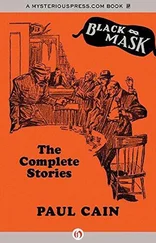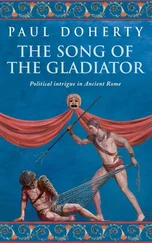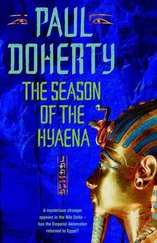13 Jean-Paul Sartre’s review appeared in the Nouvelle Revue Française on 1 November 1938.
14 At that time, the writer Raymond Queneau (1903–1976) was an employee at Gallimard, where he was responsible for English literature; up until 1929 he was close to the Surrealists. The novel Gueule de pierre appeared in 1934. Les Enfants du limon ( Children of Clay ) appeared in 1938; Book 7 comprises a presentation of what is supposed to make up the fourth part of the Encyclopaedia of the Inexact Sciences : ‘History from the coronation of Napoleon I to the abdication of Napoleon III’.
15 The plan to get a collection of Horkheimer’s essays published in France.
16 The July 1938 issue of the N.R.F. published the texts by Leiris and Caillois mentioned in the letter, plus an Introduction by Caillois and Bataille’s ‘The Sorcerer’s Apprentice’, with the title ‘For a College of Sociology’. A few copies appeared — with their own cover — in a special printing.
17 Purely as a matter of curiosity, I’ll add: the same goes for Johannes Schmidt’s undertaking. Groethuysen also insisted on making this affair his own, that is to say he defanged it [author’s note].
18 Benjamin is describing the concluding sentence of ‘Winter Wind’: ‘Those whose circulation is good will be recognized in the exceeding cold by their pink cheeks, their clear skin, their ease, their exhilaration at finally enjoying what they require of life and the great quantity of oxygen their lungs demand. Returned then to their weakness and driven from the scene, the others shrink back, shrivel, and curl up in their holes. The bustlers are paralyzed, the fancy talkers silenced, the comics made invisible. The coast is clear for those who are most able: no obstructions on the roads to impede their progress, none of the countless, melodious warbling to cover up their voices. Let them number and acknowledge each other in this rarefied air, and may winter leave them closely united, shoulder to shoulder, conscious of their strength; then the new spring will be the consecration of their destiny.’ In Dennis Hollier (ed.), The College of Sociology, 1937–39 , trans. Betsy Wing, University of Minnesota Press, Minneapolis, 1988, p. 32.
19 See Adrienne Monnier, ‘À propos de l’antisémitisme’, in Gazette des Amis des Livres , year 1, no. 5, December 1938, pp. 75–88.
20 Adrienne Monnier quotes the Hindu Vedas, particularly the Rig Veda and the ancient Persian Zend-Avesta (the commentary on the Avesta, or ‘Holy Text’).
21 Edouard Daladier (1874–1970), a member of the Radical Socialist Party, formed a government on 10 April 1938 without the Socialists. His appeasement policies vis-à-vis Hitler, which were reflected in the Munich Accord, were intended to avoid war. Romains’ lectures appeared in 1939 in a book titled Cela dépend de vous . The first lecture, ‘Discourse on Toulouse’, states the following: ‘For the first time perhaps in history, with such a degree of urgency and with so tragic a shortcut, men existed who struggled until the last possible minute to avoid that which their conscience refused to believe was inevitable. These men are called Chamberlain, Daladier, Georges Bonnet.’ (Paris: Flammarion, 1939, p. 7).
22 The passage in Romains’ ‘How to view the Franco-German Pact’— published in Paris-Soir on 6 December 1938, the date of the signing of the non-aggression pact between France and Germany — states: ‘Without me having to underline it — you sense that, though having hoped for this friendship and having worked for it, it was with no great enthusiasm that I welcomed the pact that we signed today with a steely Germany that is puffed up with power, bristling with military excitement, aggravated and perhaps intoxicated by fresh annexations; with a Germany that displays its scorn for idealistic values, such as those we hold, a bit too much, and that, in its conduct in respect of the Germans whose forefathers do not correspond to the official doctrine, abuses a bit too much the law that everyone is master in his own house.’
23 Lise Dreyfus was Romains’ second wife.
24 The reception was held on 8 December.
25 Georges Duhamel (1884–1966) was a friend of Romains until 1921. In 1935 he was elected to the Académie Française. He wrote regularly in Le Figaro . The edition of 9 November 1938 carried his essay opposing the Munich Accord, ‘From a Diplomatic Sedan to an Intellectual Sedan’. In 1939, Duhamel published his essays from this period under the title The White War of 1938 .
26 Appeared in Paris in 1914, originally titled On the Quays of La Villette .
27 Metonym for the French Ministry of Foreign Affairs [trans].
28 The body responsible for law enforcement in Paris [trans].
29 A reference to Jules Romains. This discussion by André Thérive (pseudonym of Roger Putheste, 1891–1967), which is meant to have appeared in Temps , could not be located.
30 The teacher Jacques Madaule (1898–1993), who was influenced by Claudel’s work and by Jacques Maritain, was also a member of the Popular Front and a regular political and cultural chronicler for the magazine Esprit ; his contribution ‘French Prefascism’ is in the volume mentioned, which was devoted as a whole to this theme — his essay is on pp. 327–42.
31 See ibid., p. 337.
32 See ibid., pp. 341f. Léon Henri Jouhaux (1879–1954) was general secretary of the CGT from 1909 to 1947. In 1951 he received the Nobel Peace Prize.
33 See ibid., p. 330; Madaule does not mention the name Pierre-Étienne Flandin (1889–1958) in this passage. Flandin was a deputy of the national and state parliament and a minister. Pétain made him foreign minister on 13 December 1940; he held the post until 9 February 1941.
34 See ibid., p. 338.
35 See ibid., p. 334.
36 Appeared in 1938; see Paul Claudel, Œuvres en prose , pp. 339–354; the passages cited by Benjamin can be found on pp. 351, 354 and 352.
37 This was a collective answer to an interview with Claudel, which appeared in Comœdia on 24 June and in which he stated that the literature of the Dadaists and Surrealists amounted to homosexuality. The flyer, printed on blood-red paper, was placed under guests’ plates at the banquet in honour of Saint-Pol Roux in the Closerie des Lilas on 2 July 1925.
38 The text is Peri lithon dynameon by Michael Psellos (c. 1018–c. 1097), which F. de Mély included in the second volume of his three-volume work Les Lapidaires grecs (Paris, 1898).
39 See Matthew, 13:31–32.
40 In his letter of 17 December, Horkheimer wrote: ‘Your assumption that I have relatives in Germany is correct. Not only am I called upon to help by countless relatives and acquaintances, but both of my parents are still alive too. My father is 80, my mother 70 years old. As I am an only child, this situation means that I have quite a lot to cope with. Up until the latest events, the old folk had kept themselves quite well and had not requested that I arrange their migration. Of course, that has now changed too.’ — Moritz Horkheimer (1858–1946) and Babette Horkheimer (1869–1946) managed to flee to Switzerland at the beginning of July 1939.
41 The photographer and traveller Germaine Krull (1897–1985) grew up in Paris and was a friend of Horkheimer from 1912. In subsequent years Benjamin stayed in close contact with her; the letters he wrote her are untraceable.
42 These remained unpublished during Benjamin’s lifetime. See Walter Benjamin, Gesammelte Schriften III , Suhrkamp, Frankfurt am Main, 1989, pp. 564–79.
43 In using this anagram Benjamin, who had wanted to sign as ‘Hans Fellner’, was complying with a request from Horkheimer: ‘We will accommodate your wish that the literary notice appear pseudonymously. My main reason for regretting this is that the publication of this notice in so loose a form is only really justified if its origination with a close associate of the Institute is apparent.’ (Horkheimer to Benjamin, 17 December 1938.)
Читать дальше












